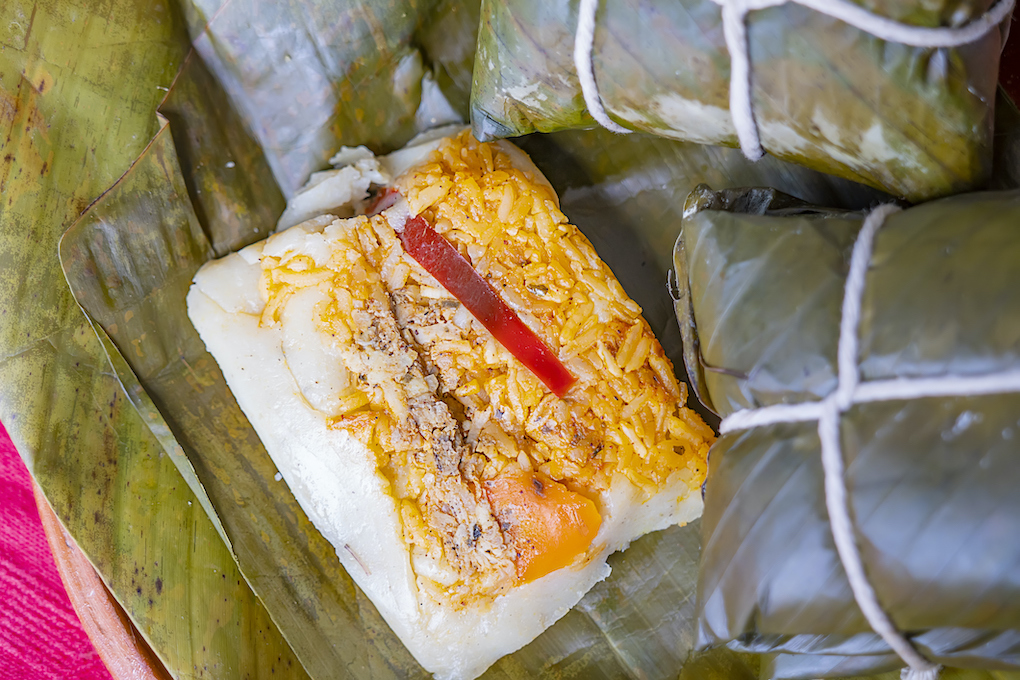From Mexico to the Caribbean all the way down to Brazil, there is one dish that connects that diaspora with its undeniable African roots— tamales.
Tamales, Pasteles, Conkie, Blue Drawers, and Ayaka— there are many names for this irresistible corn-based package of goodness and no matter what you call it and where you find it, you’ll be enjoying one of the many African legacies that have made its way around the world.
The corn-based dish usually wrapped and cooked in banana leaf is filled with various combinations depending on location including meat, salt fish, vegetables, cassava or even sweet alternatives, making it more of a dessert than a savory meal.
Largely depending on what the enslaved Africans had available as resources on their islands or in their lands, the dish varies. The names of this favorite dish even point directly back to their African origins. For instance, in the Ga language of Ghana, the dish is referred to as Kenkey — which is where the Guyanese, Bajan and St. Kitts name ‘Conkie’ comes from.
Likewise, according to the Know Your Caribbean platform, another origin is from Ghana’s Fante word ‘Dokono’ which bears resemblance to the first recorded use of a ‘pudding dressed in banana leaf’ in Jamaica in 1740.
Throughout the Caribbean, Mexico, Central and South America, this dish is enjoyed as a holiday dish – some countries enjoying it around the Christmas period, others around Easter or in the case of Barbados, on the day of Independence.
Here are some ways that the dish is referred to around the diaspora:
Dominican Republic – Pasteles en Hoja
Jamaica – Blue Draws/ Blue Drawers
Belize – Dukanu
Barbados, Guyana, St. Kitts – Conkies
Antigua and Barbuda – Ducana
Trinidad and Tobago – Paime (sweet) and Pastelle (savory)
Mexico – Tamales
Haiti – Doukounou
Puerto Rico – Pastelles
Cuba – Tamales
Aruba, Bonaire, Curaçao – Ayaka
Garífuna (Honduras) – Dukunu
Colombia – Pateles
Panama – Tamal
Brazil – Pamonha
Venezuela – Hallaca
This is also very similar to a dish called Moi Moi in Nigeria, Akele in Ghana and Olele in Sierra Leone.
Of course, because of the nature of the Caribbean, the Americas and the various peoples who have occupied, guarded and been forced out of the lands at any given time, it is important to also attribute other origins of this corn-based dish, particularly in Latin America.
The word ‘tamal’ is said to derive from the Nahuatl (language of the Aztecs) word ‘tamalli’. Many Historians believe that tamales date back to Mesoamerica and ancient civilizations as far back as, 8000 BC.
While there are several potential origins, this meal has certainly traveled with the diaspora as they set up lives and cultures around the world, still seen today.
